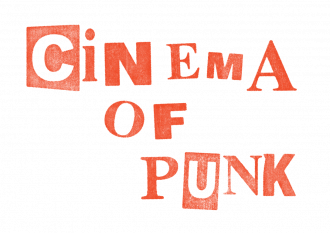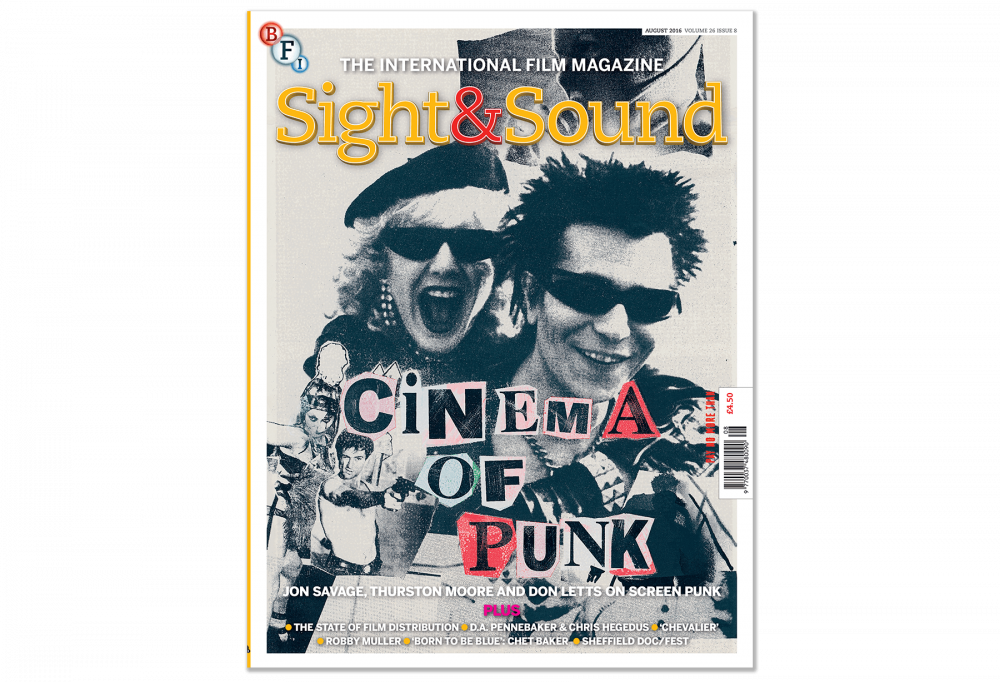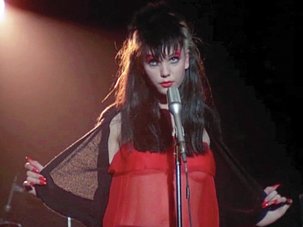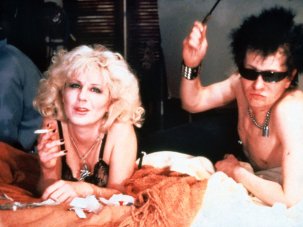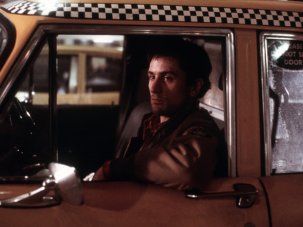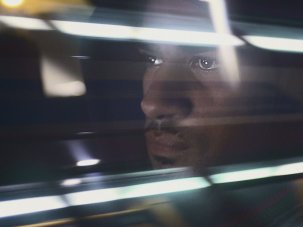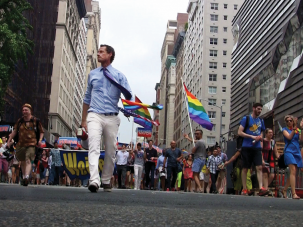Strange times call for special features, and our August issue packs two into one with major surveys of both the screen legacy of punk at 40 and the major changes technology is having on the way we watch movies.
Posted to subscribers and available digitally 7 July
→ Buy a single print issue
→ Access the digital edition
→
On UK newsstands 11 July
First, across 12 pages, we have Jon Savage perusing that shock of the nihilistic new that hit decadent liberal pieties and commercialised hippie culture as Taxi Driver and the Ramones’ first album emerged almost back to back in early 1976. Thurston Moore takes us back to punk-era film culture with Amos Poe and the sleaze cinema of 42nd Street, while Don Letts recalls the London scene, Alex Cox reflects on the cult legacy of Sid and Nancy, Will Fowler describes punk’s impact on a legion of British DIY filmmakers and Frances Morgan follows the trail to the early 90s riot grrrl scene.
Then, across 11 pages, we explore the changing shape of cinema distribution and its knock-on effects for distributors, exhibitors – and of course audiences. Industry expert Geoffrey Macnab sets the scene and takes counsel on the current struggles of arthouse exhibition. Amanda Randall heads off the beaten track to discover the new lease of energy amongst noncommercial community cinemas; Nick Pinkerton calls for critical debate and discourse to catch up with the new forms of screen art, while Kate Taylor investigates the fightback from cinephile activists who aren’t rolling over in the face of commerce and technology.
Nor is that all. At Sheffield Doc/Fest, Eric Hynes caught up with Direct Cinema doyenne D.A. Pennebaker and his long-term partner Chris Hegedus for a S&S Interview spanning a half-century of pioneering screen nonfiction, from Dont Look Back and Monterey Pop to The War Room. Trevor Johnston speaks to Robert Budreau about his improvisational biopic of jazz trumpeter Chet Baker. And Adam Nayman ponders the absurdity of modern masculinity with Athina Rachel Tsangari and her new film Chevalier. Plus plenty more…
Features
Cinema of Punk special
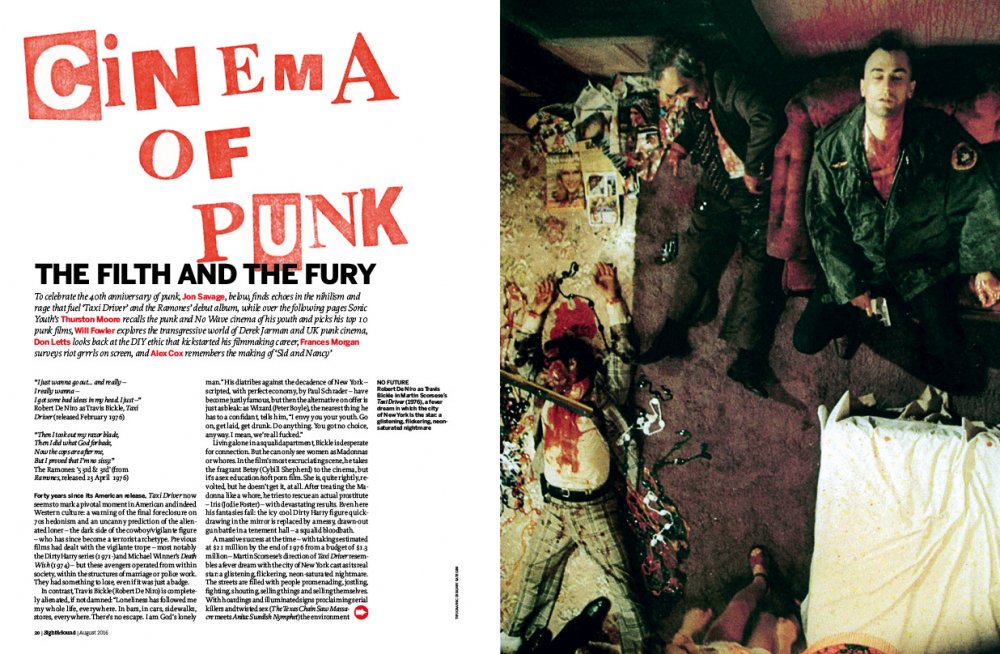
The Filth and the Fury
To celebrate the 40th anniversary of punk, Jon Savage finds echoes in the nihilism and rage that fuel Taxi Driver and the Ramones’ debut album in our six-feature Punk Special.
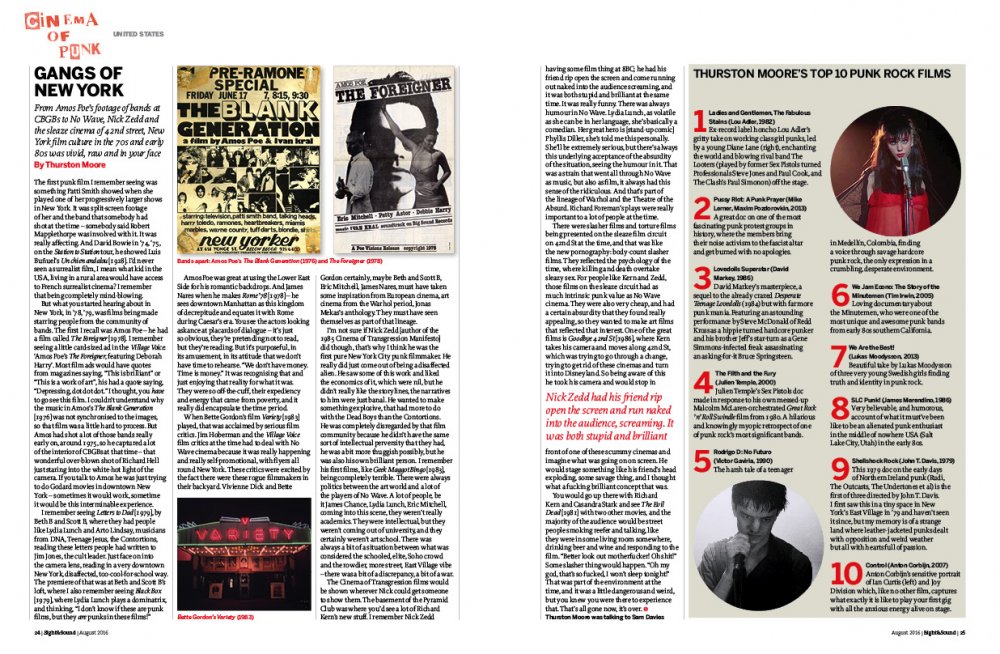
Gangs of New York
Gangs of New York
From Amos Poe’s footage of bands at CBGBs to No Wave, Nick Zedd and the sleaze cinema of 42nd street, New York film culture in the 70s and early 80s was vivid, raw and in your face. By Thurston Moore.
+ Thurston Moore’s top 10 punk rock films
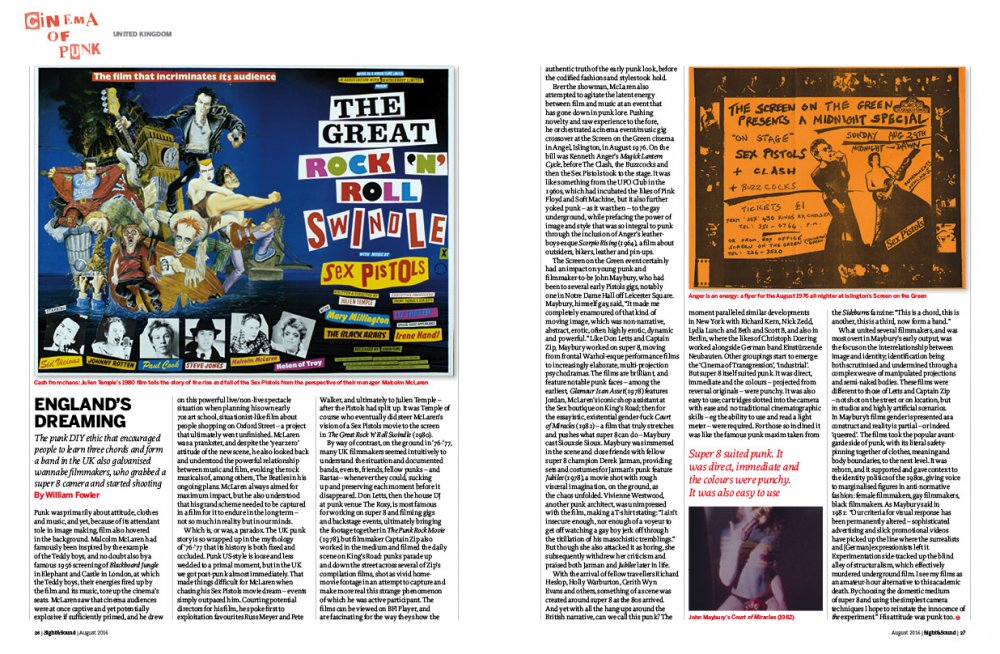
England’s Dreaming
England’s Dreaming
The punk DIY ethic that encouraged people to learn three chords and form a band in the UK also galvanised wannabe filmmakers, who grabbed a super 8 camera and started shooting. By William Fowler.
+ Friends in high places
On the eve of a 30th anniversary rerelease, the director of Sid and Nancy reflects on its status as a cult film – and argues that it should ultimately be judged as a horrific love story. By Alex Cox.
+ Scissors and an attitude
The resident DJ at the heart of the punk scene at London’s Roxy recalls how proximity to the likes of John Lydon and Joe Strummer offered a terrific opportunity to kickstart a filmmaking career. By Don Letts.
+ The golden grrrls
In the riot grrrl bands that took off in the north-west US in the early 90s, the spirit of punk took a feminist, media-literate turn – and spawned a clutch of smart underground movies. By Frances Morgan.
State of Cinema special
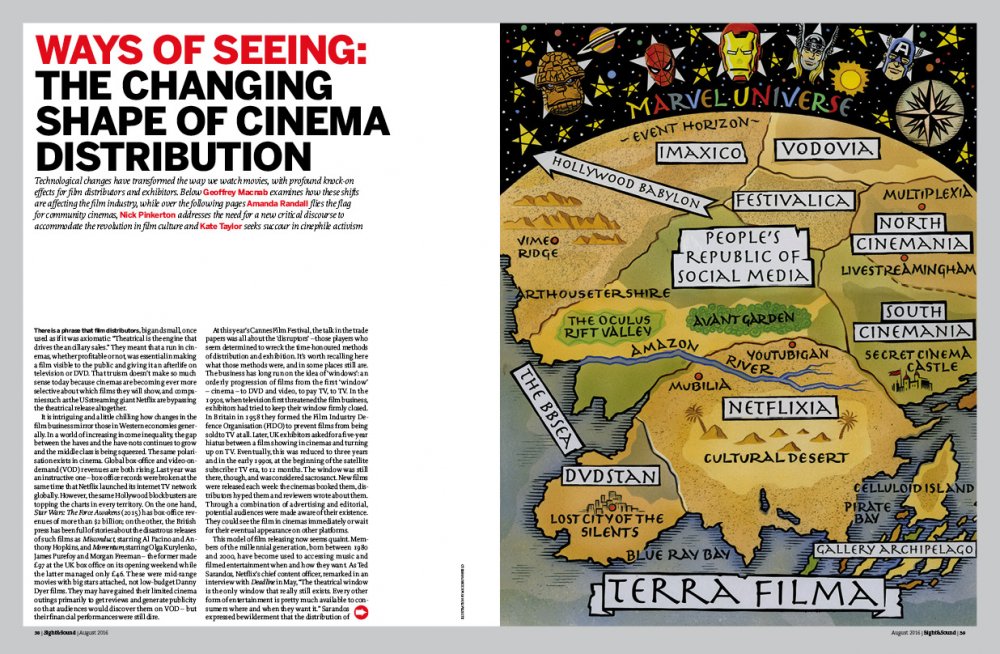
Ways of Seeing
Technological changes have transformed the way we watch movies, with profound knock-on effects for film distributors and exhibitors. Below Geoffrey Macnab examines how these shifts are affecting the film industry, while over the following pages Amanda Randall flies the flag for community cinemas, Nick Pinkerton addresses the need for a new critical discourse to accommodate the revolution in film culture and Kate Taylor seeks succour in cinephile activism.
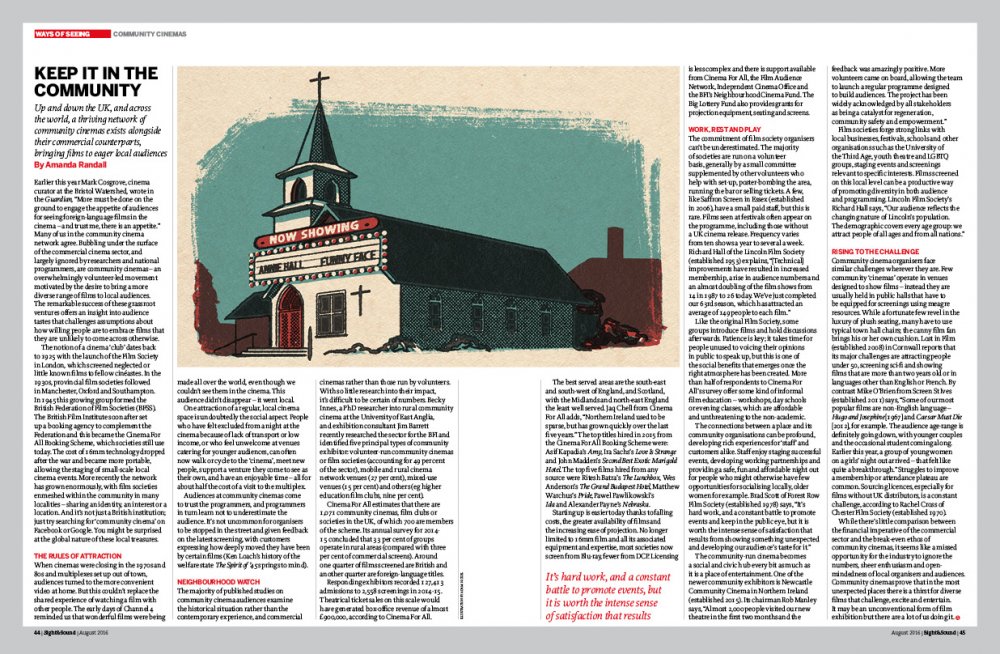
Keep it in the Community
Up and down the UK, and across the world, a thriving network of community cinemas exists alongside their commercial counterparts, bringing films to eager local audiences. By Amanda Randall.
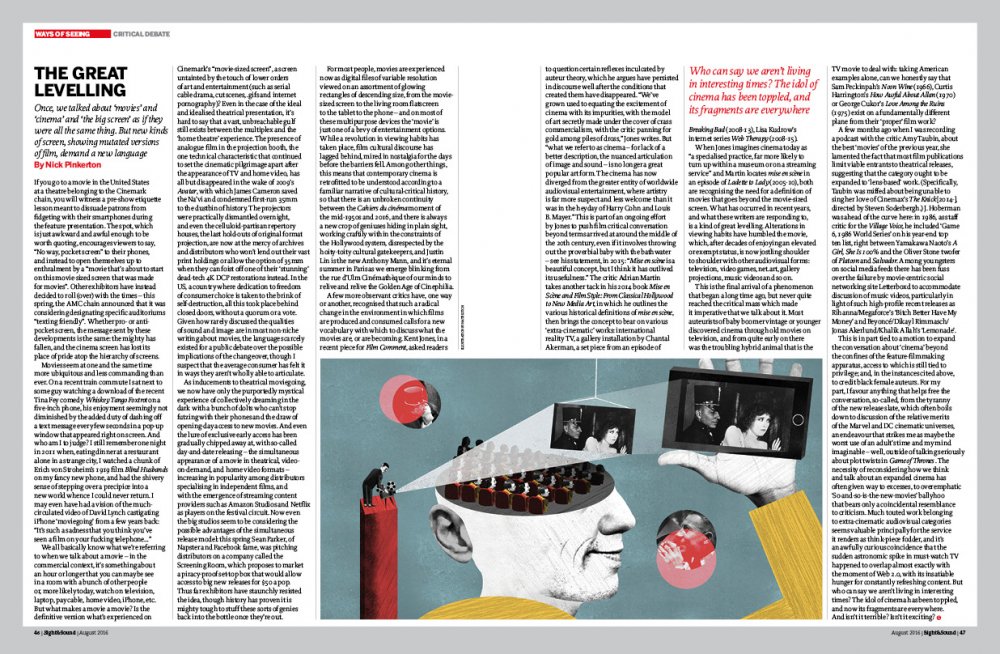
The Great Levelling
Once, we talked about ‘movies’ and ‘cinema’ and ‘the big screen’ as if they were all the same thing. But new kinds of screen, showing mutated versions of film, demand a new language. By Nick Pinkerton.
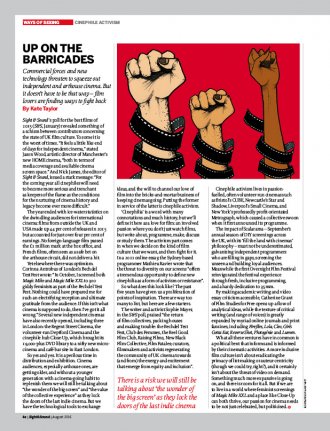
Up on the Barricades
Up on the barricades
Commercial forces and new technology threaten to squeeze out independent and arthouse cinema. But it doesn’t have to be that way – film lovers are finding ways to fight back. By Kate Taylor.
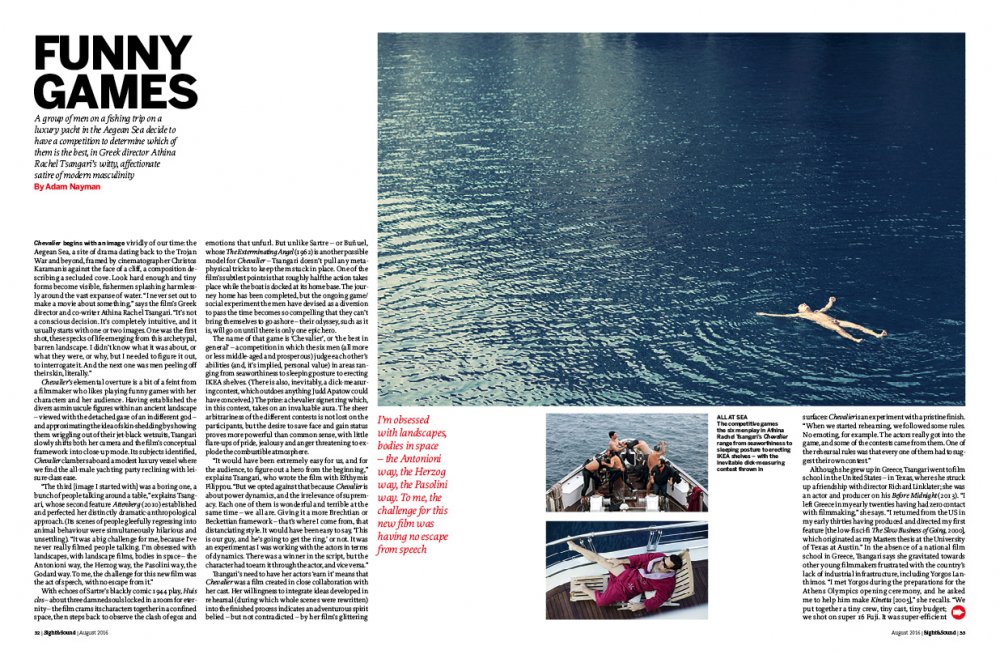
Funny Games
A group of men on a fishing trip on a luxury yacht in the Aegean Sea decide to have a competition to determine which of them is the best in Chevalier, Greek director Athina Rachel Tsangari’s witty, affectionate satire of modern masculinity. By Adam Nayman.
☞ See also Chevalier reviewed by Erika Balsom
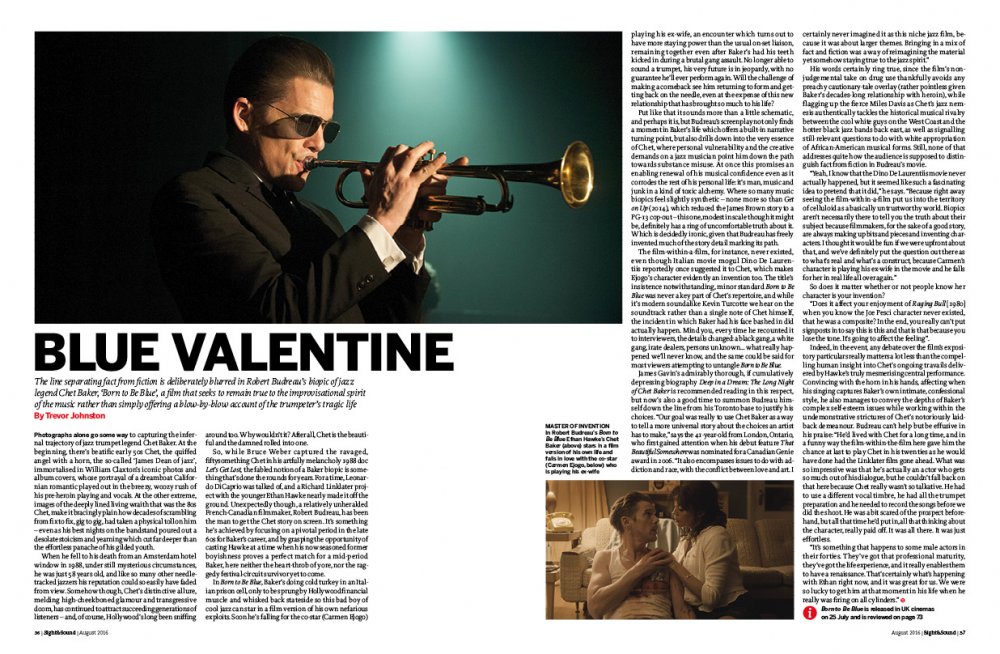
Blue Valentine
The line separating fact from fiction is deliberately blurred in Robert Budreau’s biopic of jazz legend Chet Baker, Born to Be Blue, a film that seeks to remain true to the improvisational spirit of the music rather than simply offering a blow-by-blow account of the trumpeter’s tragic life. By Trevor Johnston.
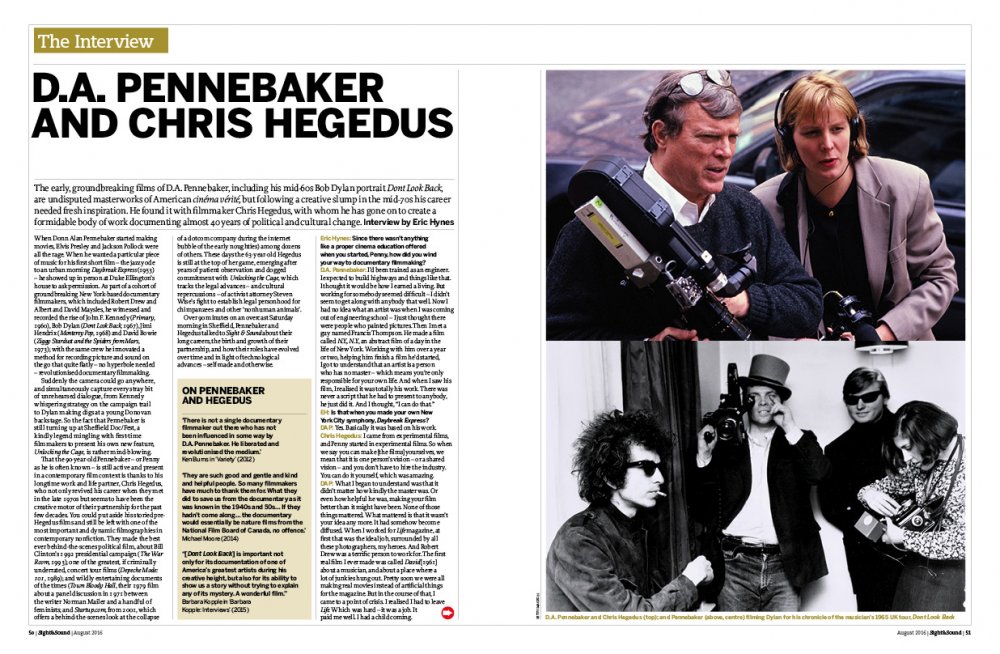
The Sight & Sound Interview: D.A. Pennebaker and Chris Hegedus
The early, groundbreaking films of D.A. Pennebaker, including his mid-60s Bob Dylan portrait Dont Look Back, are undisputed masterworks of American cinéma vérité, but following a creative slump in the mid-70s his career needed fresh inspiration. He found it with filmmaker Chris Hegedus, with whom he has gone on to create a formidable body of work documenting almost 40 years of political and cultural change. Interview by Eric Hynes.
☞ Watch
Editorial
Desperately seeking the bright side of Brexit
Rushes
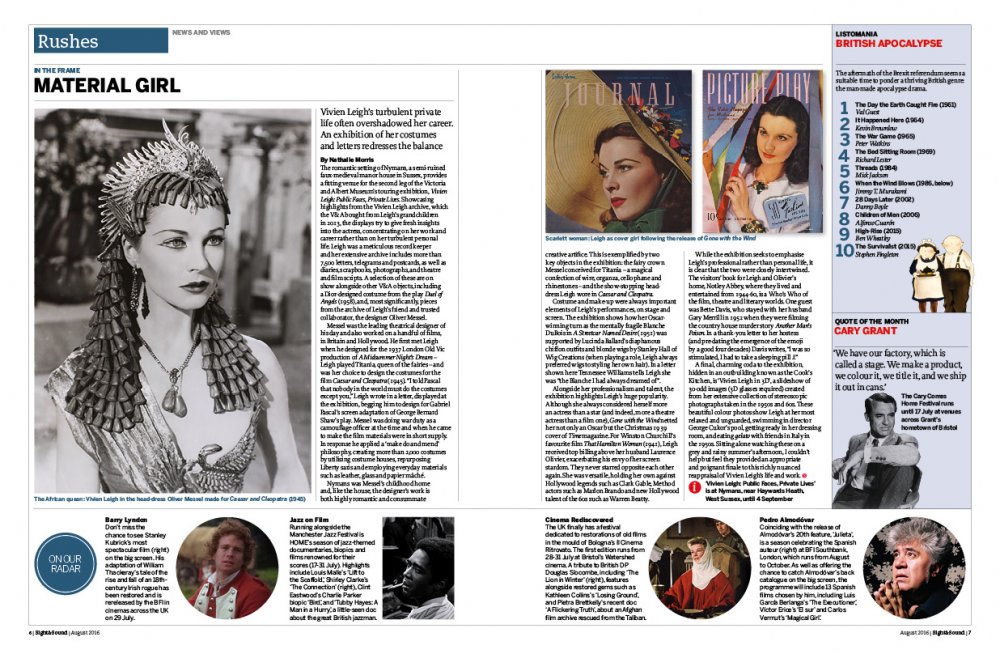
In the frame: Material girl
Vivien Leigh’s turbulent private life often overshadowed her career. An exhibition of her costumes and letters redresses the balance. By Nathalie Morris.
Listomania: British apocalypse
Object lesson: Just for the record
Despite the changing times, cinema has kept faith with turntables as shorthand for all that is holy or hip about playing recorded music. By Hannah McGill.
The five key…: Ali screen appearances
Muhammad Ali’s magnetic presence lives on in his screen outings, showing him floating like a butterfly and stinging like a bee. By Christina Newland.
Interview: Trouble at home
Rebecca Miller pairs Greta Gerwig with Ethan Hawke in Maggie’s Plan, a light romantic comedy with echoes of classic screwball. By Abbey Bender.
Exhibition: the geography of light
The great Dutch DP Robby Müller’s natural light compositions helped define the look of films by Wim Wenders and Jim Jarmusch. By Nick Roddick.
Dispatches: Art imitating life
At the ‘86’ festival in Slavutych, a city built to house evacuees from the Chernobyl disaster, I felt the on- and offscreen worlds start to blur. By Mark Cousins.
The Industry
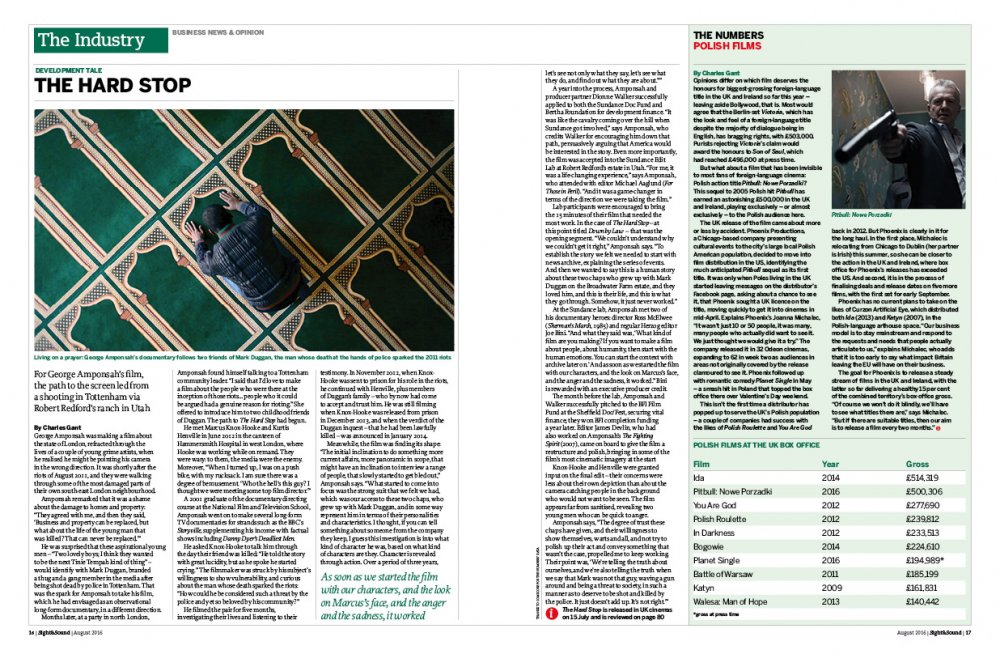
Development tale: The Hard Stop
For George Amponsah’s film, the path to the screen led from a shooting in Tottenham via Robert Redford’s ranch in Utah. By Charles Gant.
☞ See also The Hard Stop reviewed by Ros Cranston
The numbers
Pitbull: Nowe Porzadki and Polish films at the UK box office. By Charles Gant.
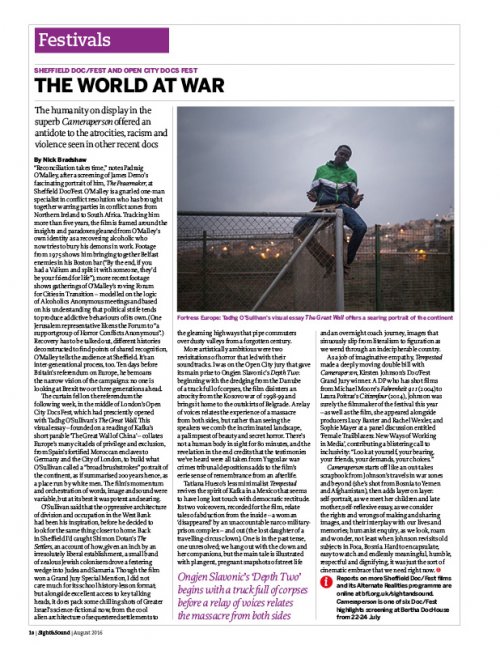
Festivals
Sheffield Doc/Fest and Open City Docs Fest: The world at war
The humanity on display in the superb Cameraperson offered an antidote to the atrocities, racism and violence seen in other recent docs. By Nick Bradshaw.
☞ Crossing a line? Character-filmmaker collusions at Sheffield Doc/Fest 2016
☞ Deeper, longer, realer: VR at Sheffield Doc/Fest 2016
☞ Screen or scream? Fight or flight? Penny Woolcock and Ross McElwee on the perils of festivals
Wide Angle
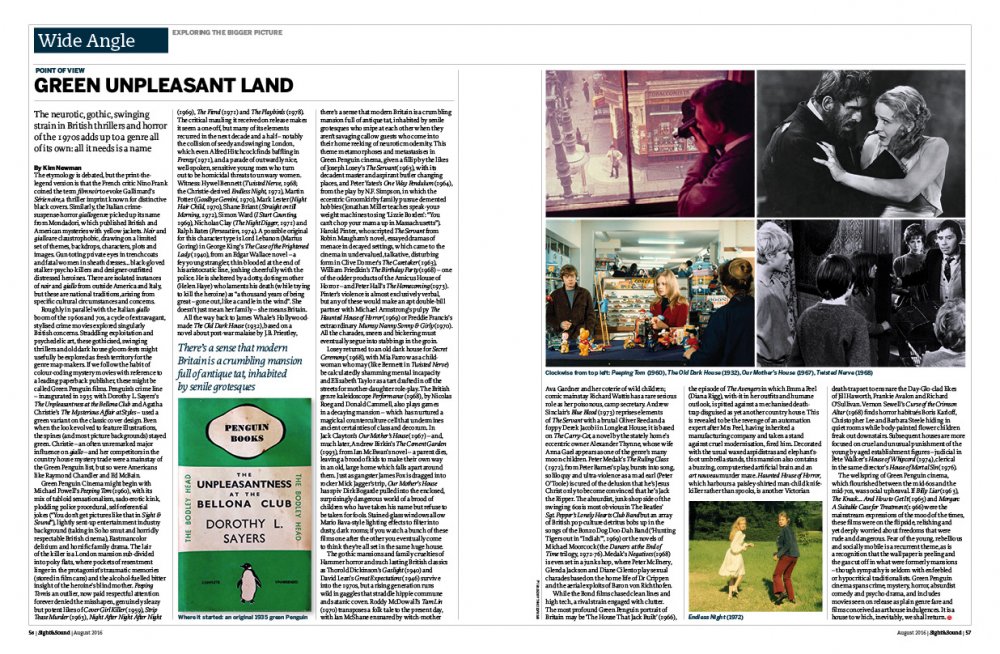
Point of view: Green unpleasant land
The neurotic, gothic, swinging strain in British thrillers and horror of the 1970s adds up to a genre all of its own: all it needs is a name. By Kim Newman.
Soundings: Lock, stock and barrel
Prince’s eccentric, wildly variable filmography places him in a long line of black filmmakers trying to run their own careers. By Sam Davies.
Primal screen: the world of silent cinema
Are the attitudes embodied in a few early films so repellent that we should simply steer clear of them? By Bryony Dixon.
Festival: The Nos have it
The outstanding feature of this year’s Oberhausen short film festival was a programme of political work from Latin America. By John Beagles.
Rediscovery: Crest of the wave
As the profile of Czech cinema of the 60s and 70s continues to rise, it’s time to revisit the innovative work of Drahomíra Vihanová. By Peter Hames.
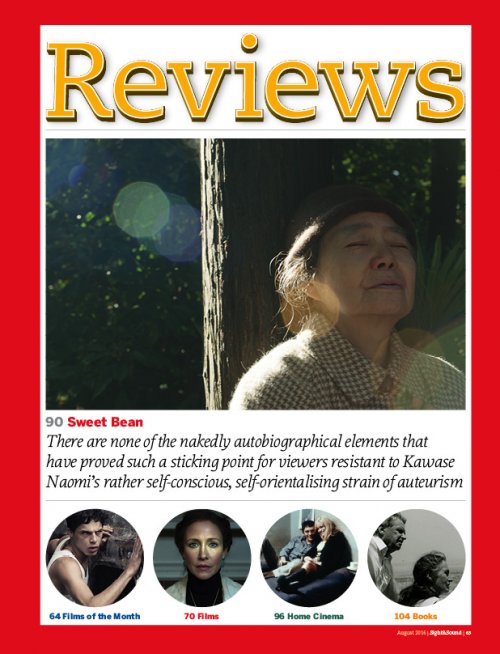
Our Reviews section
Reviews
Films of the month
From Afar
A Poem Is a Naked Person
Queen of Earth
plus reviews of
Aferim!
Author: The JT LeRoy Story
Bayou Maharajah
The BFG
Born to Be Blue
Brahman Naman
The Carer
Central Intelligence
Chevalier
The Commune
The Conjuring 2
Les Cowboys
Down by Love
Finding Dory
Gods of Egypt
The Hard Stop
Independence Day: Resurgence
Keanu
K-Shop
The Mafia Kills Only in Summer
Me Before You
The Meddler
Men & Chicken
Ming of Harlem: Twenty One Storeys in the Air
Minuscule: Valley of the Lost Ants
The Neon Demon
Now You See Me 2
Precious Cargo
The Purge: Election Year
The Secret Life of Pets
Summertime
Sweet Bean
Teenage Mutant Ninja Turtles: Out of the Shadows
Top Cat Begins
Up for Love
Warcraft: The Beginning
Weiner
Where You’re Meant to Be
Home Cinema features
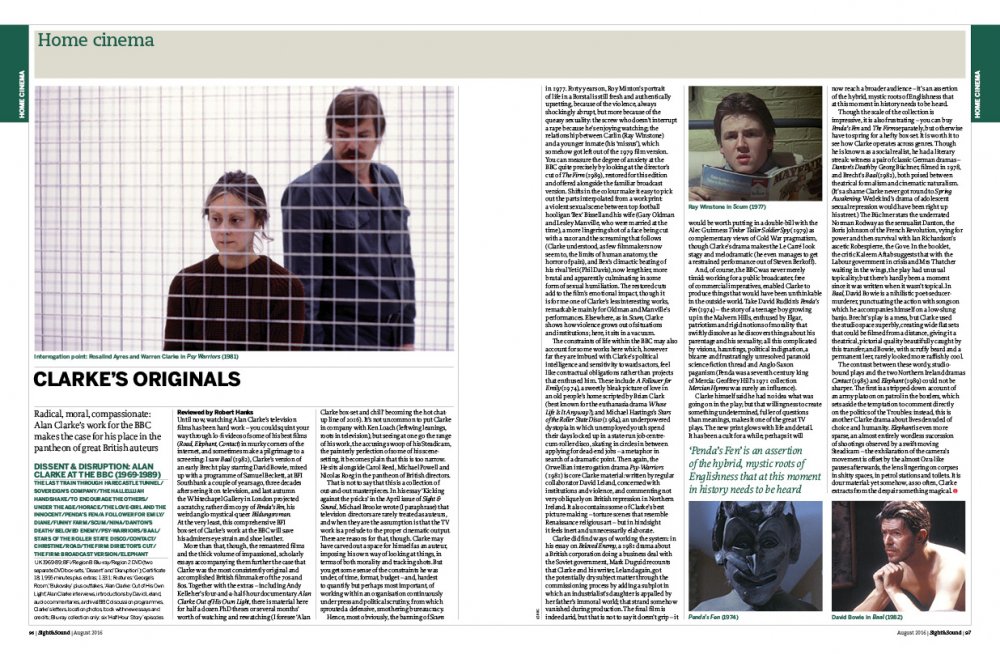
Our Home Cinema section
Clarke’s originals: Dissent & Disruption: Alan Clarke at the BBC (1969-1989)
Radical, moral, compassionate: Alan Clarke’s work for the BBC makes the case for his place in the pantheon of great British auteurs. By Robert Hanks.
The Oppenheimer project: Joshua Oppenheimer Early Works: A collection of 12 films
Mixing interviews with fact, fiction and psychedelic collage, this collection of early films reveals the route to The Act of Killing. By Nick Bradshaw.
Tales of mystery and imagination: Mysterious Object at Noon
Apichatpong Weerasethakul’s debut feature zigzags from fish sellers to football to capture the spirit of millennial Thailand. By Nick James.
Lost and found: Dingo
Miles Davis makes his only feature-film appearance in this offbeat but beguiling mash-up of jazz, ambition and outback Australiana. By Jaymes Durante.
plus reviews of
Absolute Beginners
The Chase
Dead Pigeon on Beethoven Street
Gilda
Here Comes Mr Jordan
A Month in the Country
Poor Cow
Richard III
Rich Kids
Stuff and Dough
That Cold Day in the Park
Television
Culloden/The War Game
Books
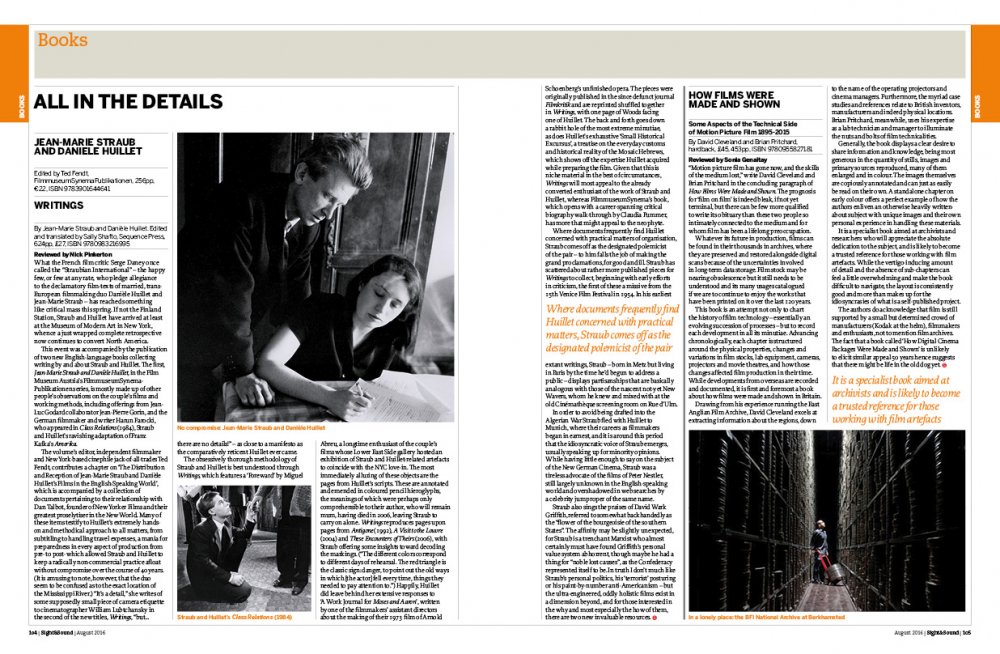
Jean-Marie Straub and Danièle Huillet edited by Ted Fendt (FilmmuseumSynemaPublikationen) and Writings by Jean-Marie Straub and Danièle Huillet, edited and translated by Sally Shafto (Sequence Press) reviewed by Nick Pinkerton
How Films Were Made and Shown: Some Aspects of the Technical Side of Motion Picture Film 1895-2015 by David Cleveland and Brian Pritchard reviewed by Sonia Genaitay
The Chaplin Machine Slapstick, Fordism and the Communist Avant-Garde by Owen Hatherley (Pluto Press) reviewed by Henry K. Miller
Letters
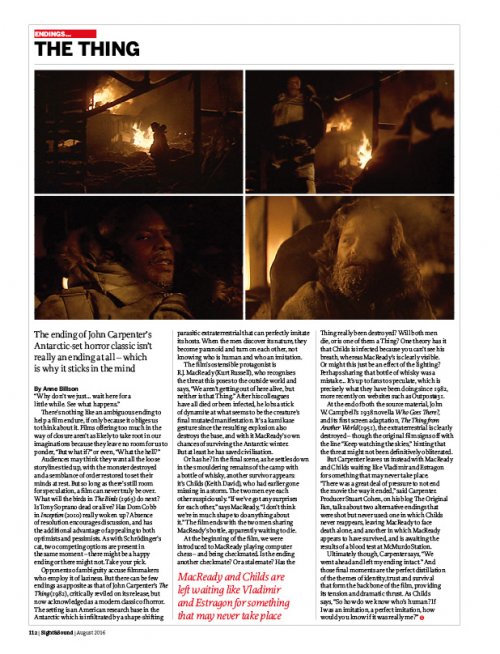
Our Endings section
Mustang’s non-clichéd claustrophobia
Dawn of Justice, seriously
Lost in the trash: perfectly earnest exploitation
Mel Brooks butchered
British buddy movies, with women
A correction about Warner Bros Studios Inc vs Bette Davis
Poor dialogue sound now, not then
Endings
The Thing
The ending of John Carpenter’s Antarctic-set horror classic isn’t really an ending at all – which is why it sticks in the mind. By Anne Billson.
Further reading
-
The Digital Edition and Archive quick link
Log in here to your digital edition and archive subscription, take a look at the packages on offer and buy a subscription.




